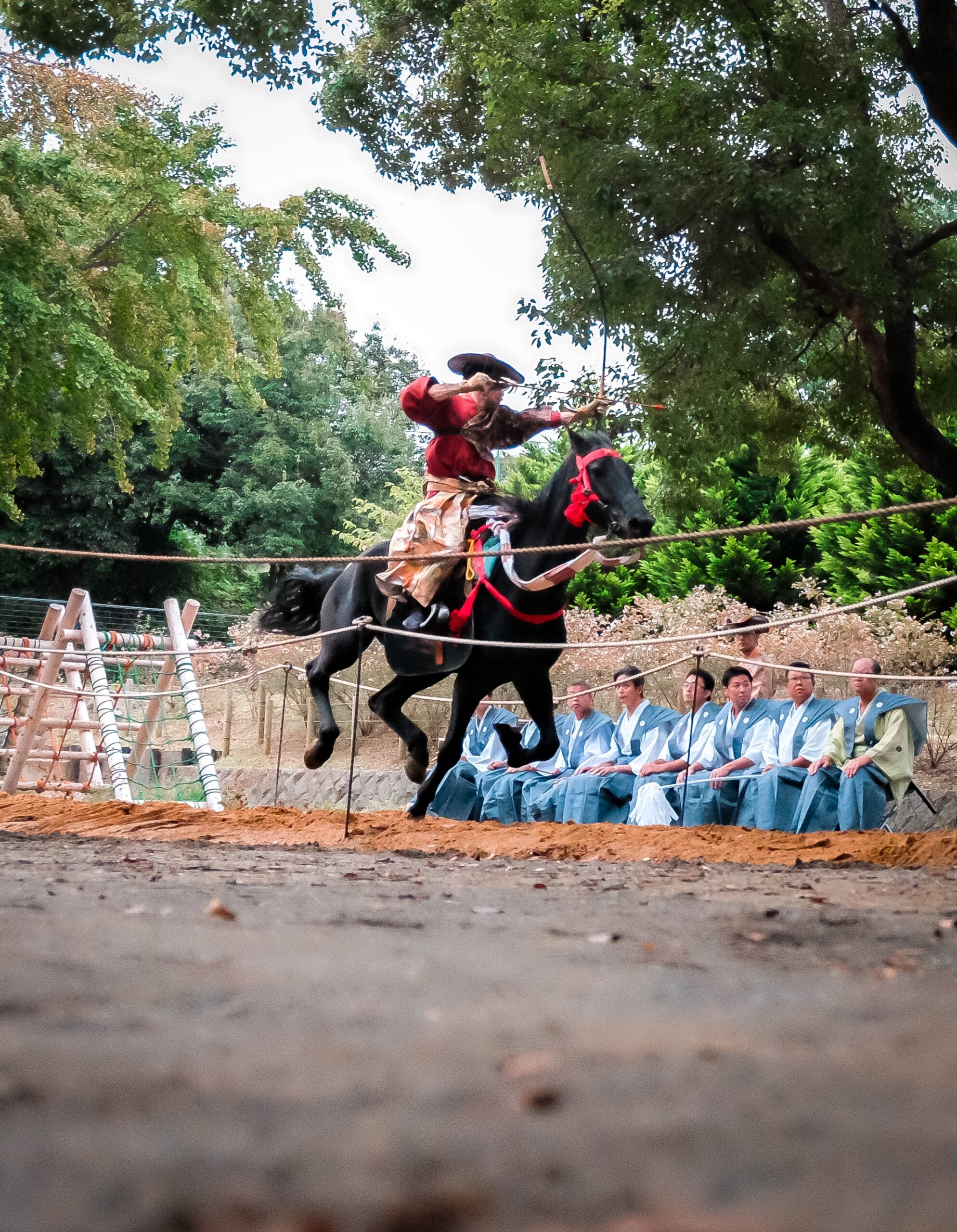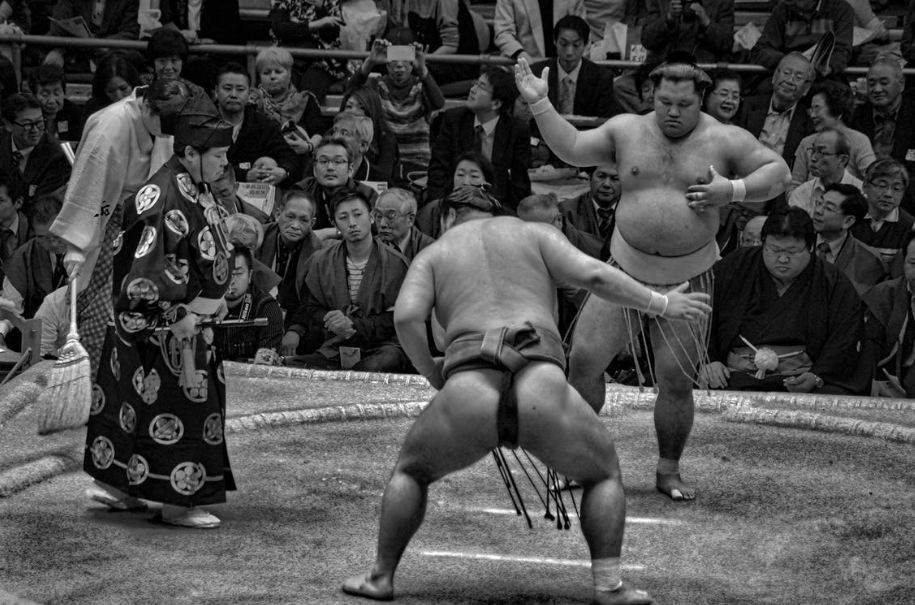What Is Seppuku in Japanese Culture?
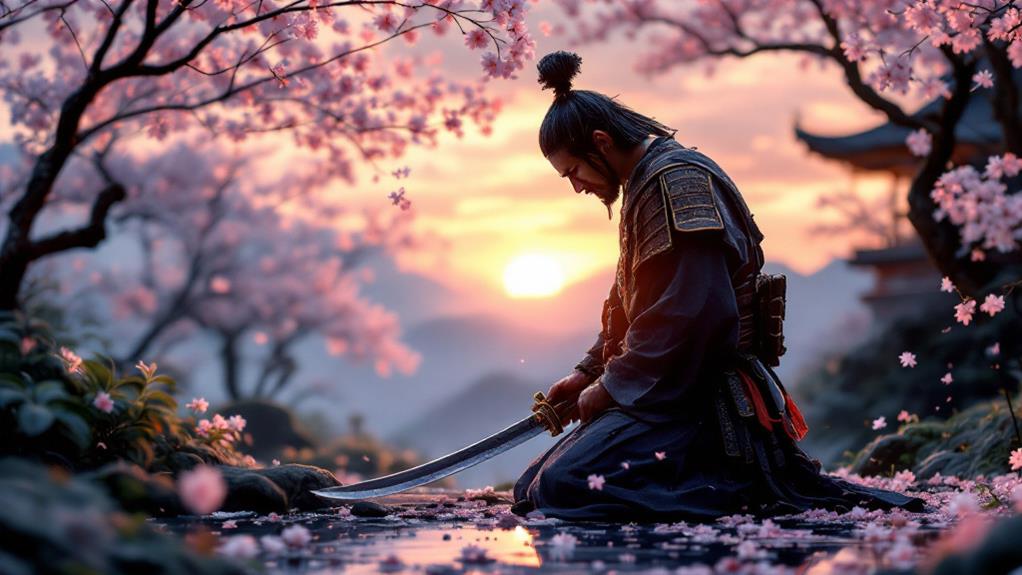
In Japanese culture, seppuku is a ritual suicide with deep roots in samurai tradition, emphasizing honor and loyalty. Originating from the Bushido code, it allowed samurai to restore personal and familial honor after failure or disgrace. The practice involves a detailed ritual, including ceremonial attire and composing a death poem. A trusted companion, the kaishakunin, assists to guarantee a dignified end. Seppuku is not just about death but symbolizes spiritual purification and control over one's fate. While no longer practiced, its legacy prompts reflection on cultural values and the weight of honor. Uncover the profound layers of this tradition.
Origins of Seppuku
Seppuku's origins trace back to the early days of samurai culture in feudal Japan. The practice emerged as part of the samurai values that emphasized loyalty and honor, which were integral to the Bushido code. You might be familiar with the image of a warrior choosing death over dishonor, and that's exactly where seppuku finds its roots. It was more than just a dramatic gesture; it held profound cultural significance. Practiced primarily by the samurai, it served as a means to restore honor to oneself or one's family in the face of failure or disgrace. This act of ritual suicide wasn't taken lightly and was steeped in solemn tradition.
As you investigate the cultural significance of seppuku, you'll find that it wasn't merely a personal act but a reflection of societal values. In literature, seppuku is often referenced to highlight themes of loyalty, sacrifice, and the tragic beauty of the warrior ethos. Classic works, such as those by Yukio Mishima, probe deep into the psyche of characters who choose seppuku, illustrating the intense internal conflicts and unwavering commitment to principles. Through these literary references, you're offered a window into the complex nature of honor and duty in samurai culture, painting a vivid picture of why seppuku was so revered.
The Samurai Code
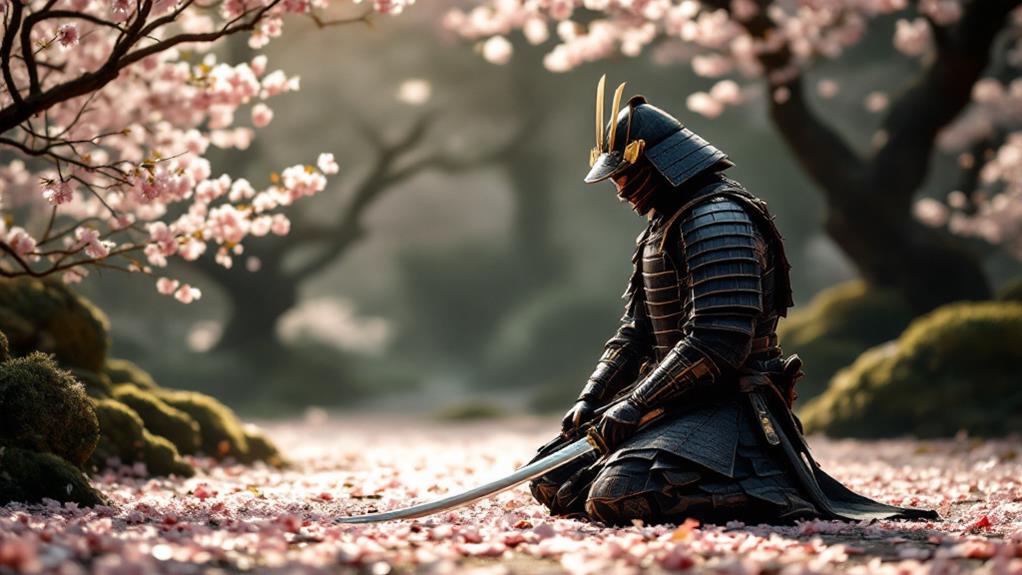
When exploring the samurai code, or Bushido, you uncover a complex set of principles that governed the lives of Japan's warrior class. This code isn't just a set of rules; it's a philosophy that emphasizes virtues like loyalty, courage, and integrity. Central to samurai ethics is the unwavering commitment to one's lord and the readiness to lay down one's life for honor. Bushido's honor codes dictated that a samurai must uphold their dignity, even in the face of death, which is where the practice of seppuku comes into play as a demonstration of ultimate loyalty and personal honor. Similar to how discipline and responsibility are instilled in students in the Japanese educational system, the bushido code instilled a strong sense of duty and honor in samurai. You see, the samurai lived in a world where reputation meant everything. Violations of the samurai ethics could lead to disgrace, not just for the individual but for their entire family. Seppuku was considered a way to preserve one's honor in the event of failure or dishonor. This act was not taken lightly; it was a profound expression of the Bushido code, underscoring the gravity of honor in samurai life. By adhering strictly to these honor codes, samurai maintained their status and legacy, ensuring they lived and died with respect and distinction.
Ritual Procedure
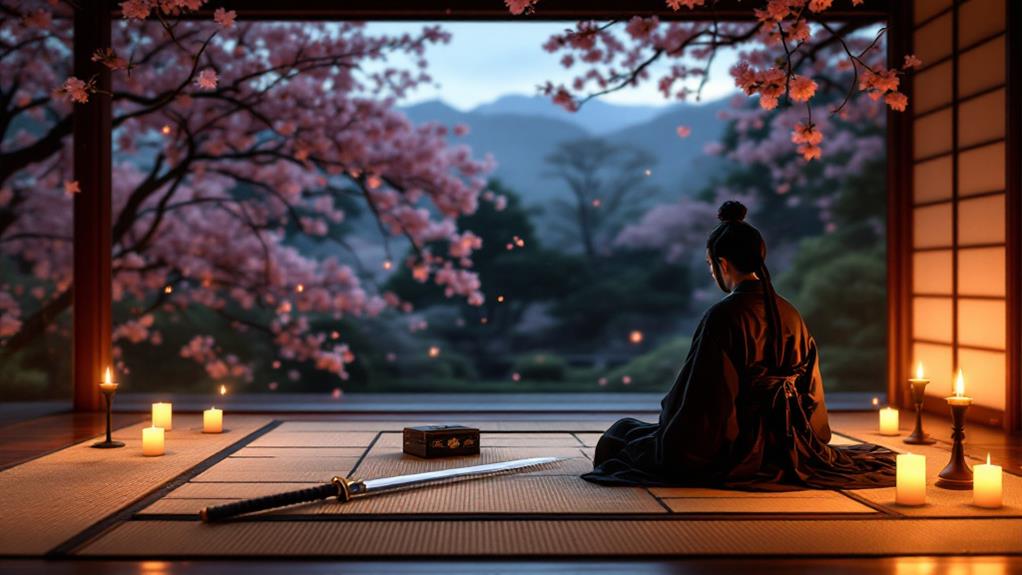
Understanding the samurai's commitment to honor and loyalty provides insight into the solemn act of seppuku. This ritual, deeply entrenched in the samurai code, was far from a spontaneous decision. It required careful planning and adherence to tradition, reflecting both personal integrity and societal expectations.
As you prepare for seppuku, you don ceremonial attire, which typically includes a white kimono symbolizing purity and readiness to meet one's end with dignity. The ritual begins with a ceremonial meal, often a simple dish, symbolizing your last earthly indulgence. This meal is not just a physical preparation but also holds spiritual significance, allowing you to reflect on your life and impending death.
Next, you'll move to the designated location, often a serene setting that improves the ritual's somber atmosphere. Seppuku isn't merely a physical act but a deeply spiritual expedition. You're expected to compose a death poem, capturing your final thoughts and emotions. As you kneel, you steady your mind, focusing on the significance of this moment. The blade, usually placed in front of you, becomes a symbol of your resolve and acceptance of your fate, turning the act into a profound passage rather than a mere end.
Role of the Kaishakunin
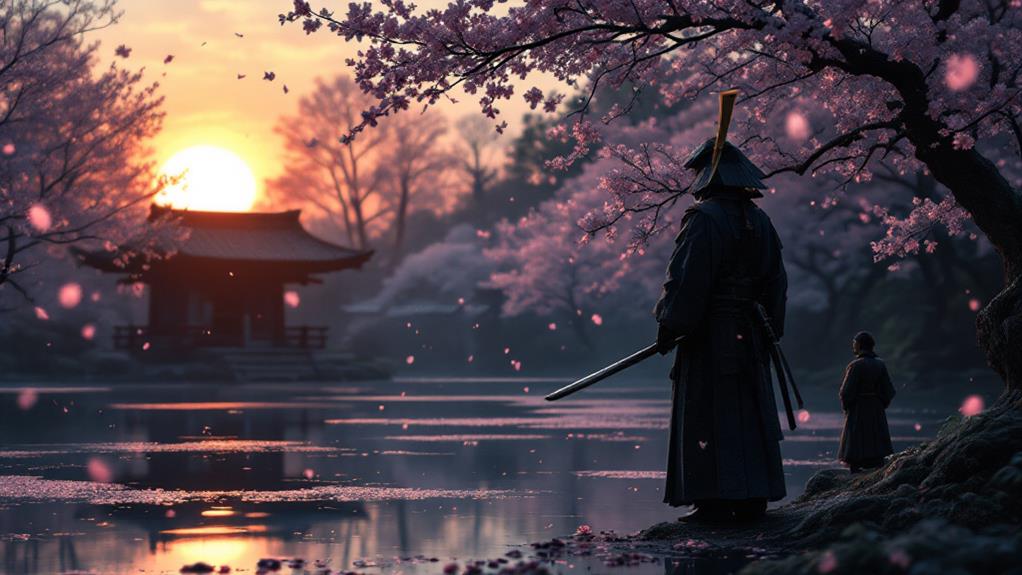
In the solemn act of seppuku, the role of the kaishakunin, or the second, is fundamental to guarantee a dignified end. As a trusted individual, the kaishakunin stands ready to ease the samurai's suffering by delivering a swift, precise decapitation, assuring the ritual's honor and integrity remain intact. Understanding the kaishakunin duties reveals the cultural significance embedded in this role, highlighting the values of loyalty, compassion, and respect.
The kaishakunin's responsibilities include preparing mentally and emotionally, as it's a task that demands inner strength and composure. The role isn't merely functional; it embodies deep-seated cultural values that underscore the importance of fulfilling one's duty with honor and precision. Here are some key aspects to reflect upon:
- Preparation: The kaishakunin must be skilled with a sword, displaying technical proficiency to guarantee the act is swift and respectful.
- Trust: The chosen person is often a close friend or ally, reflecting the profound bond and trust placed in them.
- Timing: Timing is critical, as the kaishakunin acts at the precise moment to minimize suffering.
- Composure: Maintaining calm and focus is crucial, as any hesitation could prolong agony and dishonor the ritual.
These elements highlight the kaishakunin's significant role in preserving the dignity of seppuku.
Historical Context
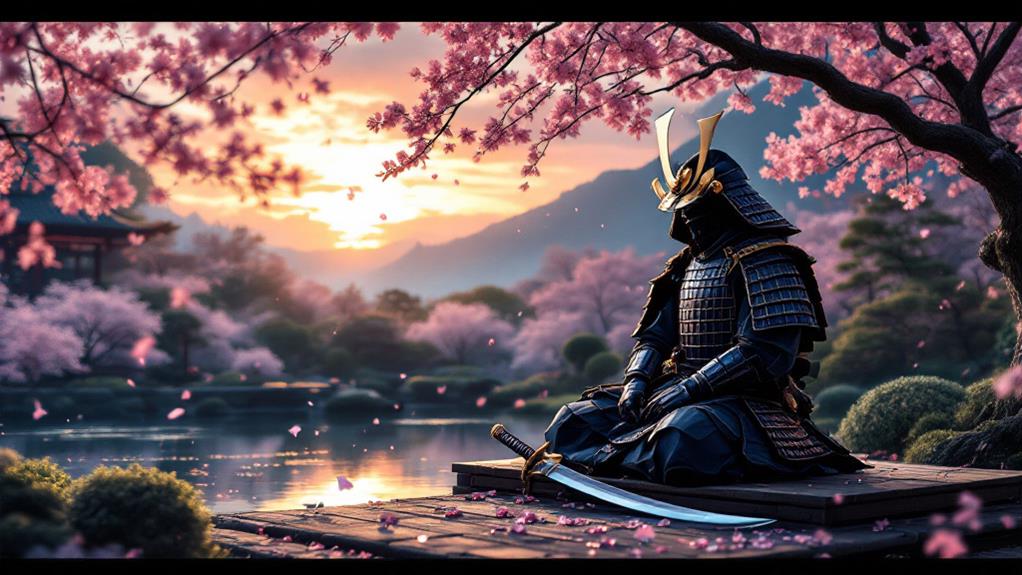
Seppuku, a ritualized form of suicide associated with samurai honor, has deep roots in Japanese history, stretching back several centuries. You'd find that this practice was not merely an act of despair, but rather one intertwined with the social fabric and moral codes of the samurai class. Emerging during the Heian period (794-1185), seppuku became more pronounced in the Kamakura period (1185-1333) when the samurai class solidified its power. Its cultural significance grew, becoming a way to restore honor and demonstrate loyalty, especially during the feudal age.
Understanding seppuku's historical context, you grasp its social implications. In a time where honor and loyalty were paramount, failing in duty or facing disgrace was intolerable for a samurai. Seppuku offered a path to regain lost honor, thereby maintaining societal order and personal dignity. The act was viewed with a mix of fear and reverence, highlighting its cultural significance. It wasn't just about individual honor; it resonated through families and larger social structures, impacting the perception of one's lineage and allies. The historical context of seppuku reveals a complex web of social norms and cultural values that defined a period.
Symbolism and Meaning

The intricate practice of seppuku transcends its historical roots, carrying profound symbolism and meaning. In Japanese culture, seppuku isn't just an act of self-destruction; it embodies a complex web of values and psychological aspects. By understanding its deeper layers, you can appreciate the cultural significance seppuku holds.
- Honor: Central to seppuku is the preservation of personal honor. When faced with disgrace, a samurai would choose seppuku as a way to redeem themselves, proving loyalty and courage.
- Control: Engaging in seppuku allowed individuals to maintain control over their fate. By taking one's life, the samurai could avoid a dishonorable death at the hands of their enemies, asserting their agency even in death.
- Spiritual Cleansing: Seppuku signified a form of spiritual purification. It wasn't merely a physical act but a way to cleanse one's spirit, attempting to restore balance and harmony.
- Heritage: Seppuku is a testament to the enduring heritage of samurai culture. It symbolizes the intense commitment to values that transcended individual life, leaving an indelible mark on Japanese cultural identity.
Understanding these elements reveals seppuku's layered significance, offering insights into the psychological and cultural dimensions of this solemn tradition.
Modern Perspectives
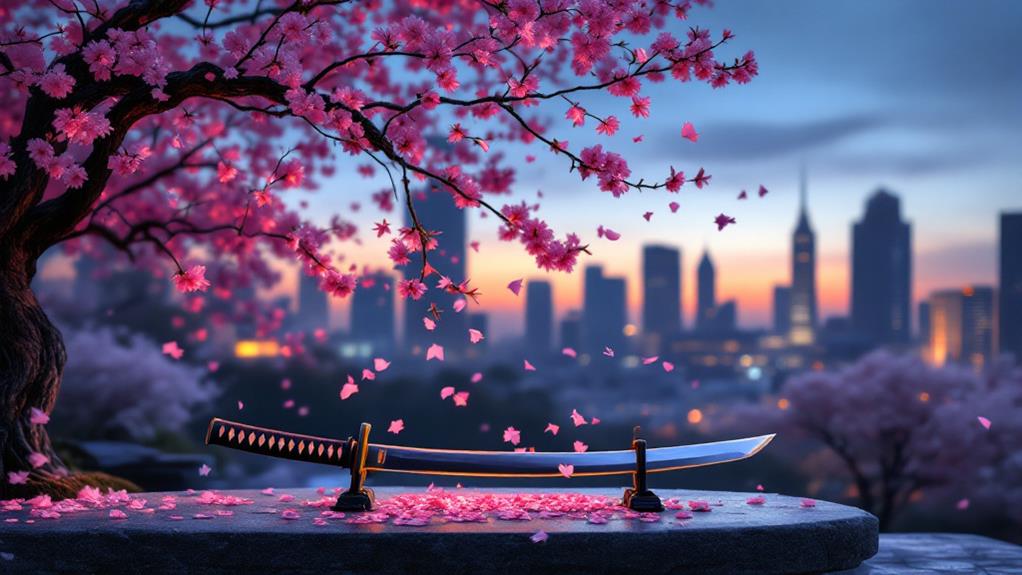
Today, many see seppuku through a lens that blends both reverence and critique. As you investigate this practice, you'll find that cultural interpretations have shifted considerably over time. In the past, seppuku symbolized honor and redemption within the samurai class. However, contemporary views often regard it as an outdated ritual tied to a bygone period. In modern Japan, seppuku isn't practiced but is understood as a historical aspect of samurai culture and literature, evoking a complex mix of fascination and disapproval.
You'll notice that in contemporary views, seppuku is sometimes romanticized in media, reflecting a broader cultural fascination with the samurai's code of honor. Yet, it also sparks critical discussions about the pressures of conformity and the extreme lengths to which individuals might go for the sake of honor. Younger generations may view seppuku more critically, questioning the cultural interpretations that once justified such acts. They might see it as a reflection of societal expectations rather than an honorable choice. For many, understanding seppuku today involves balancing respect for tradition with a critical eye toward the values it represented and the impact it had on individuals.
